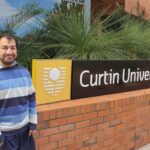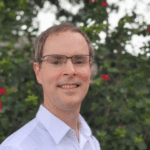[youtube]http://www.youtube.com/watch?v=UrwI5sQVFqE[/youtube]
Making the best use of limited health resources will become an even greater challenge in the decades to come as our ageing population and the growing incidence of chronic diseases increase and widen the demands on health services.

Compounding the situation are predictions that Australia is heading for a significant medical workforce shortage.
There is already a shortage of doctors. A 2009 report in the Medical Journal of Australia has indicated that, if current medical intake numbers are maintained, the nation will need to import a quarter of its medical workforce by 2025.
Doctor shortages have been a significant issue in Western Australia for some time, especially in rural and remote areas, where more than half of all doctors are overseas-trained.
The growth of metropolitan hospital services – including the completion of the new Fiona Stanley Hospital and expansion of facilities in Midland, Rockingham and Joondalup – will further stretch these resources.
The head of Curtin University’s Faculty of Health Sciences, Jill Downie, says that recruiting doctors from other countries is only a bandaid fix.
Professor Downie says that importing doctors will not address Australia’s longer-term health workforce needs, which are growing more complex with the ageing population and the increase in lifestyle-related chronic conditions.
Curtin hopes to open its own medical school in 2014 – subject to Australian Government approval.
The school would train a new type of doctor, more focused on primary care and better equipped to operate beyond the city limits.
“We need to build greater capacity in our local workforce to respond quickly and effectively to the changing healthcare landscape,” Professor Downie said.
“This issue isn’t just about numbers, but about ensuring that we have the right skills in the right places.
“While we will provide the same biomedical training as other medical schools, we will actively recruit students who are interested in areas of practice that are currently underserviced – primary care, chronic disease management, aged care, mental health and Indigenous health – and who are willing to work in regional and remote areas.”
The teaching approach at Curtin would also be different, with a focus on interprofessional education to place quality and safety of patient care front and centre.
This year, in an Australian first, the Faculty of Health Sciences introduced a common interprofessional first year for all its undergraduate students.
That means students from a range of disciplines – including nursing, physiotherapy, pharmacy, occupational therapy, nutritional science and psychology – work side by side from day one, learning what each discipline can offer and what can be achieved through collaboration.
“Experience shows that many of the errors we see in hospitals are the result of poor communication between health professionals, or a lack of key information being shared, rather than medical incompetence,” Professor Downie said.
“All of our courses now develop skills in communication, teamwork, conflict resolution and reflective thinking as core competencies.”
Professor Downie said the aim wa to develop health professionals who understand patients’ needs are rarely one-dimensional, and that several people – including patients themselves – need to work together in the planning of their care.
“No single profession, working in isolation, has the expertise to respond adequately to the needs of clients with complex issues,” she said.
“This approach will start to shift traditional notions of professional identity, but all for the better, for the patients who are being served.”
While this new breed of doctor may be some years away – the medical school plans to graduate its first students in 2019 – the faculty is already reinventing other healthcare roles to respond to emerging needs.
Its new Postgraduate Certificate in Medication and Disease State Management, for example, is giving pharmacists new skills to help patients manage chronic disease.
Meanwhile, the Master of Nursing (Nurse Practitioner) qualification is expanding the role of experienced nurses, equipping them to prescribe drugs, order tests and refer clients to specialists.
“This reinvention of traditional roles can help to alleviate pressure on the system and prevent medical bottlenecks in settings where doctors are in short supply,” Professor Downie said.
“Our healthcare needs are changing rapidly, and our workforce can’t afford to stand still.”
Story adapted from one in CITE by CLAIRE BRADSHAW
Photography: JAMES ROGERS



